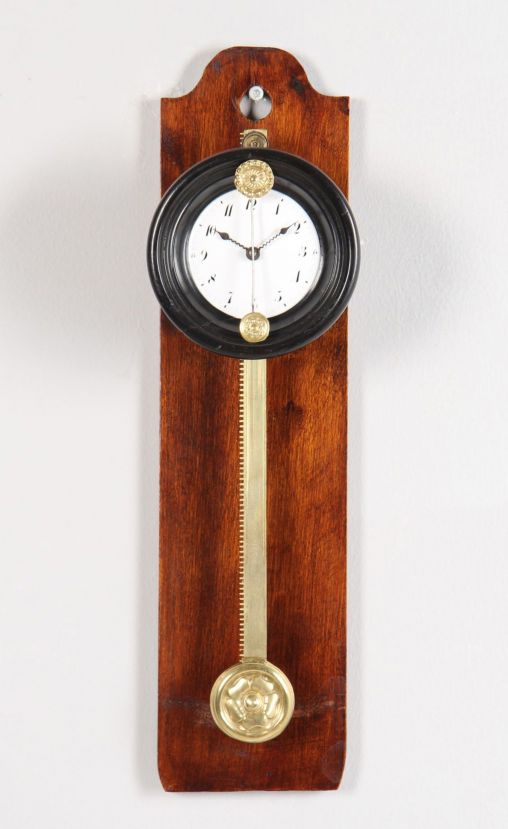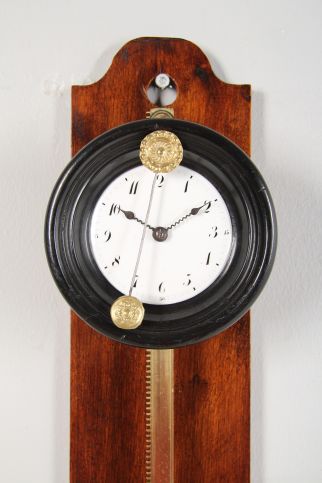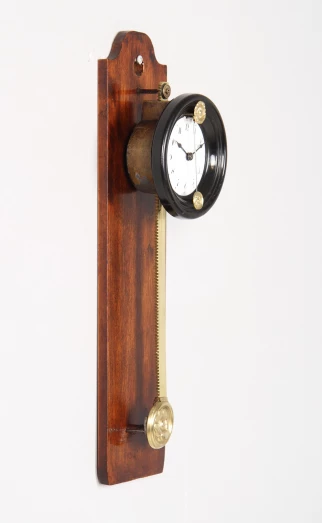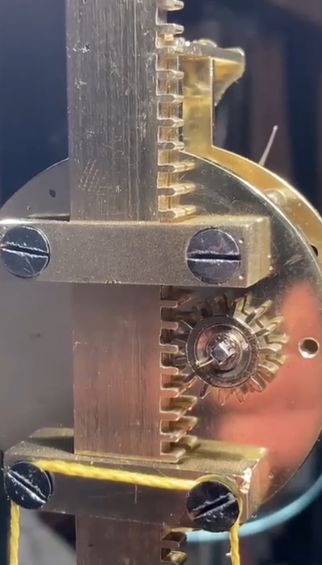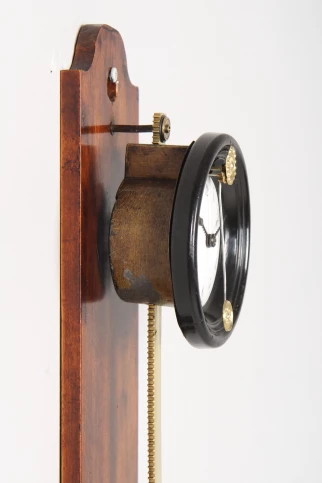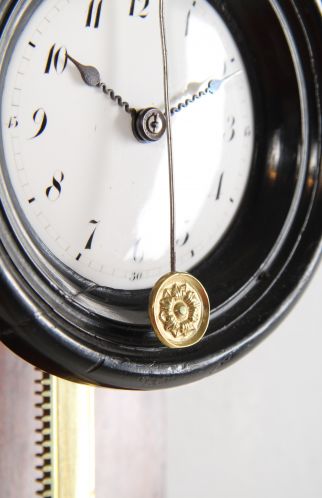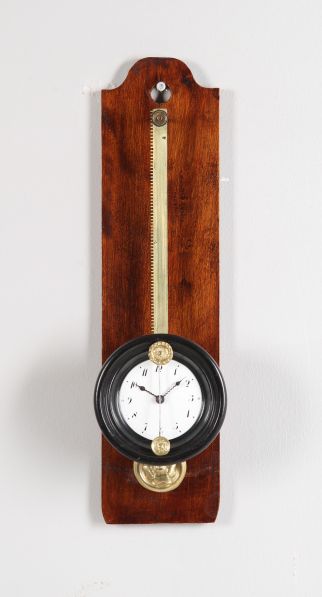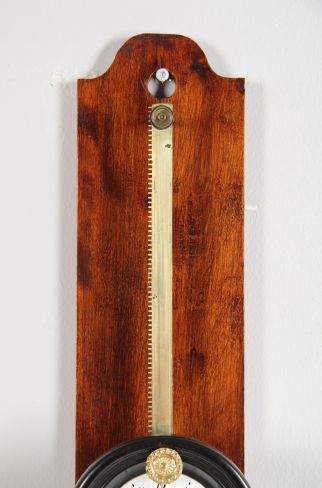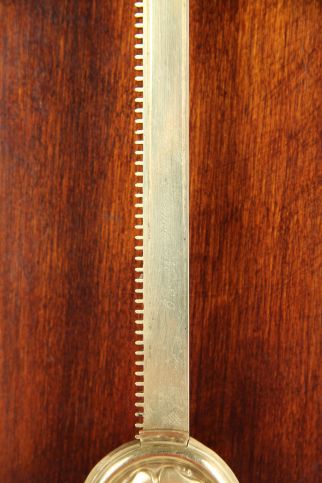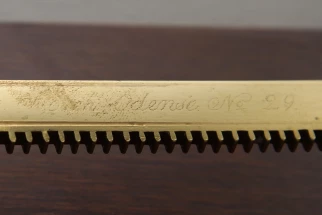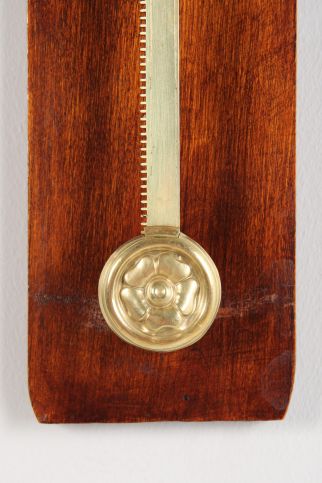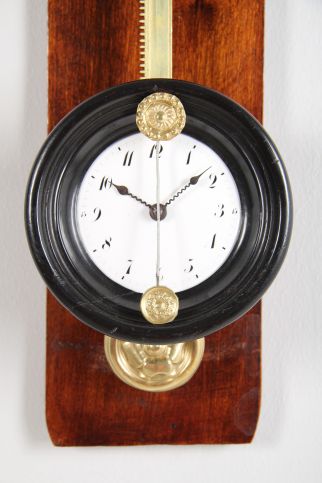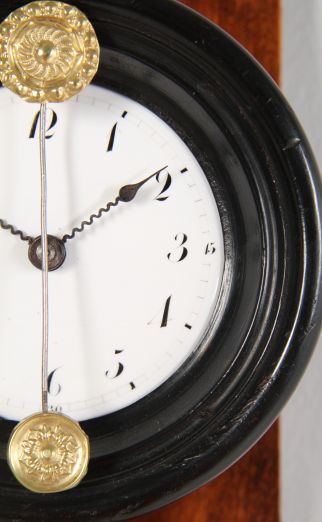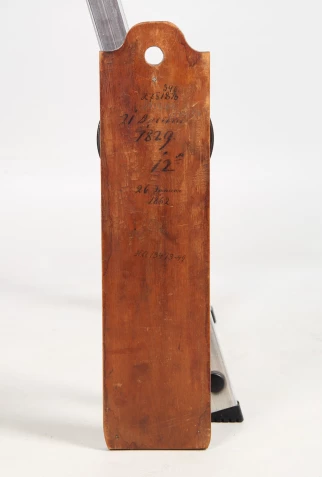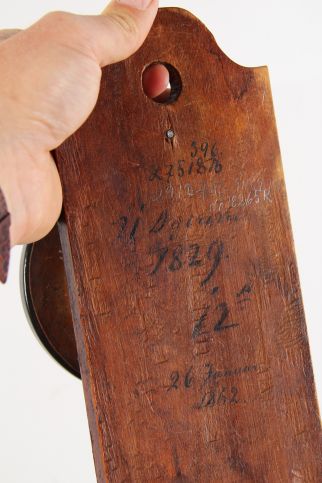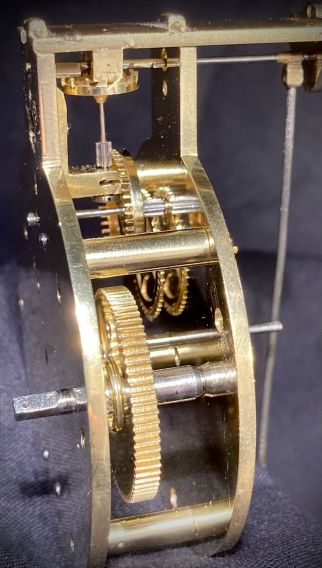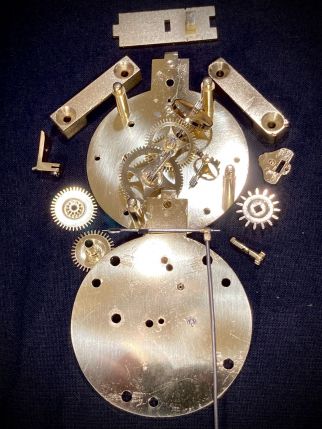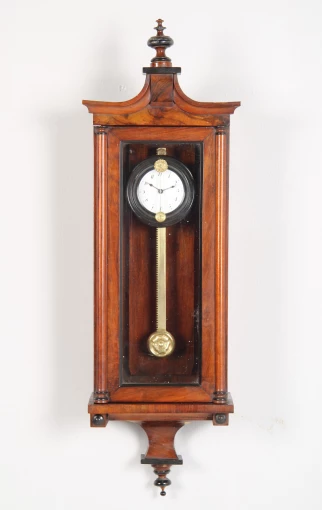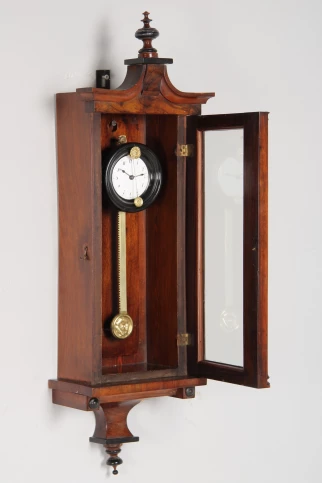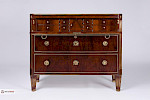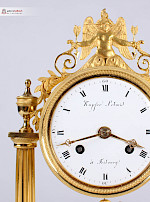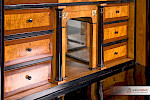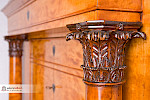Rare antique saw clock
Denmark
Brass, enamel
dated: 1829
Dimensions: H x W x D: 46 x 13 x 8 cm
Description:
Very unusual and extremely rare gravity-driven wall clock suspended from a toothed moulding.
The brass bar is mounted on a board made of solid mahogany wood with teeth on the left-hand side. This so-called saw engages in the clock's gear train and provides the necessary drive energy through the clock's own weight.
The movement, which is encased in metal for weight reasons, is pushed upwards on the saw and then gravity provides the necessary tension in the gear train. It takes about 36 hours until the clock has "travelled" once from the top to the bottom and then has to be pushed up again.
The rate of the movement with verge escapement is regulated by a short front pendulum. It swings in front of the white enamelled dial with its finely drawn Arabic numerals and the equally incredibly finely crafted wave-shaped hands.
The dominant, ebonised bezel not only serves to draw the observer's gaze to the dial, but also provides the necessary robustness for daily touching and lifting.
A closer look reveals a needle-embossed signature at the bottom of the brass bezel: Borch - Odense - No 29.
The clockmaker Chr. Carl Borch (1797-1866) ran a small workshop in Odense, specialised in the manufacture of bracket and saw clocks. He is explicitly mentioned in the report Tidens gang i Odense - Om tidsmåling og urmagere or The passage of time in Odense - About timekeeping and clockmakers, written by Jens Kongsted Lampe for Odense Museum and available at the following link: https://museumodense.dk/artikler/tidens-gang-i-odense/
The designation No29 suggests that Borch produced these movements in a small series. Another example, probably from the same series, was sold at Uppsala Auktions Kammare in 2007 under lot number 469.
The clock is dated on the back: 21 December 1829, where we also find some numbering and the date 26 January 1862, presumably the date of a cleaning of the movement.
The separate case from the late 19th century is not original and not really necessary, as the movement is protected from dust by the metal casing. This case, purchased by the previous owner, is expressly unrestored and included in the purchase price as it is. See photo.
Worth knowing:
Saw clocks belong to a small group of gravity-operated drive technologies in which the clock itself provides the necessary drive energy with its weight rather than a separate weight or a tensioned spring. One of the oldest known saw clocks, made by Francesco Philippine, dates back to 1688 and is now in the possession of the Hessian State Museum in Kassel.
The principle of the saw clock is as simple as it is ingenious - it uses a toothed bar as a guide and energy store at the same time: as the clock body slowly descends along this toothed bar, the energy is transferred evenly to the movement. This mode of operation is not only technically remarkable, but also visually fascinating - the slow "fall" of the clock allows the passing of time to be experienced directly.
Condition:
Very beautiful and authentic condition. The movement has been completely dismantled, thoroughly cleaned and overhauled. It runs perfectly.
Please refer to the following specialised literature:
Jürgen Abeler - Ullstein Uhrenbuch p.74
Karl-Ernst Becker & Hatto Küffner - Uhren p.105
Article found under: Clocks
Video saw clock
Video clockwork saw clock
Also interesting
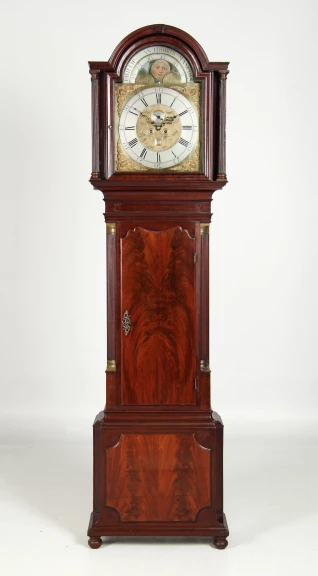
English grandfather clock with moon phase
England (Manchester)
Mahogany
second half of 18th century
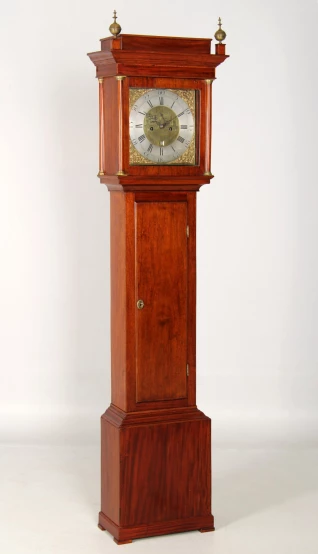
George III grandfather clock - James Pike
England (Newton Abbot)
Mahogany
circa 1790

Biedermeier chair with ink painting
Northern Germany
Birch
Biedermeier around 1820
